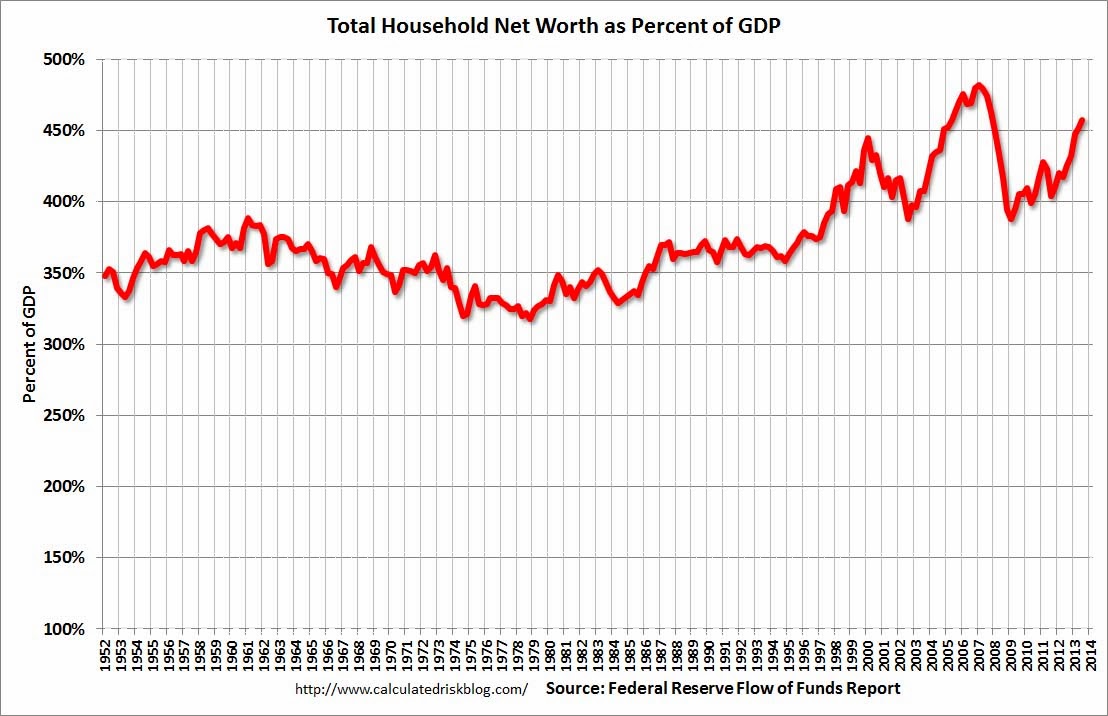The January 16, 2014 issue of Fortune contained a nice article on what a great place Goldman Sachs is to work. The article focused on the combination of highly intelligent, motivated workers selflessly toiling away in an atmosphere driven by collegiality and teamwork. It is a culture where the best and brightest in our society work together for the betterment of team Goldman, a culture that seems to be different than the "eat what you kill" culture that defines other investment banks.
I have known a number of Goldmanites over the years and I would say that the above is true. The article also spent some time discussing how this culture, or operating system as Lloyd Blankfein described it, was what allowed the firm to bounce back so well from the financial crisis.
No, they don't mention the the largess of the U.S. Treasury pouring more than $100 billion of taxpayer capital into Goldman and the other bankrupt banking entities of the day. Nor do they mention the trillions of dollars that the Fed pumped into the banks, buying and revaluing up their failing assets. No mention is given of the bailout of AIG either, which was the crumbling keystone that was going to bring down the stupidly leveraged financial system. No, it was their culture that saved them.
Sure.
I digress, however. The more interesting question is, just how did the smartest, hardest working, team oriented people on this planet push themselves to the very edge of bankruptcy?
This is a question that is not asked often enough, and I don't just mean regarding Goldman Sachs. In Austrian Business Cycle Theory (ABCT) this problem of how smart entrepreneurs and capitalists all wind up making the same mistake at the same time is referred to as the "clustering of errors" problem.
The game of capitalism rewards those entrepreneurs and capitalists who make the best forecasts. These people will be rewarded with profits. The market then is a
"breeding ground," in the words of Murray Rothbard, "
for the reward and expansion of successful, far-sighted entrepreneurs and the weeding out of inefficient businessmen. As a rule only some businessmen suffer losses at any one time; the bulk either break even or earn profits? How then, do we explain the curious phenomenon of the crisis when almost all entrepreneurs suffer sudden losses? In short, how did all of the country's astute businessmen come to make such errors together, and why were they all suddenly revealed at this particular time? This is the great problem of cycle theory."
Rothbard, in his book "America's Great Depression" quotes economist Siegfried Budge, "
In the purely free and unhampered market, there will be no cluster of errors, since trained entrepreneurs will not all make errors at the same time." This is an important and insightful statement.
Well then, how do we get the best and brightest to all blow their capital allocation decisions at the same time? ABCT lays particularly heavy blame at the feet of central banks who intervene in the interest rate market, generally to artificially lower interest rates.
If a society has a time preference that lengthens, they will consume less today and choose to save more. This saved capital can then be lent out, increasing the supply of real capital in the system. This increase in the supply of real capital should serve to lower interest rates. This lowering of rates and the increase of real capital should serve to lengthen the structure of production. It sends a signal to entrepreneurs that they can engage in an increase in investment, particularly those investments with a longer time horizon. That is, projects farther away from the end consumer, those whose output take lots of time to reach the consumer, are likely to be the biggest beneficiaries of such a change in time preference.
Central banks, in their zeal to increase economic activity (kindle
animal spirits for you Keynesians) often choose to print money from thin air and artificially reduce interest rates. The signal that this sends to capitalists and entrepreneurs is that there has been an increase in real savings, or capital, in the system. Projects that may take some time to come to fruition now look like a better bet to entrepreneurs than they did when interest rates were higher and new investments are made. The problem is, not only has there not been an increase in the amount of real savings in the system, but the artificially low rates have actually reduced the amount of savings that society is willing to provide. An imbalance between the supply and demand for real capital has been created. Entrepreneurs and capitalists have been fooled by the false signals fed into the market by central bank intervention. As this becomes apparent at some point in the future, a recession occurs as the wasted capital is written off.
This is how even our best and brightest at Goldman Sachs have been fooled and have pushed themselves to the edge of bankruptcy. The Fed, the European Central Bank, the Bank of Japan, the People's Bank of China and all the rest of the central banks continue to send false signals to the system, creating huge imbalances, crushing the supply of savings and real capital with artificially low rates, all the while creating increased demand for real capital. It is a complete mess. Goldman Sachs has only tinkered with their capital structure and they remain a highly leveraged institution in an age of massive malinvestment. They will revisit the edge of bankruptcy again.
Disclaimer: Nothing on this site should be construed as investment advice. It is all merely the opinion of the author.


